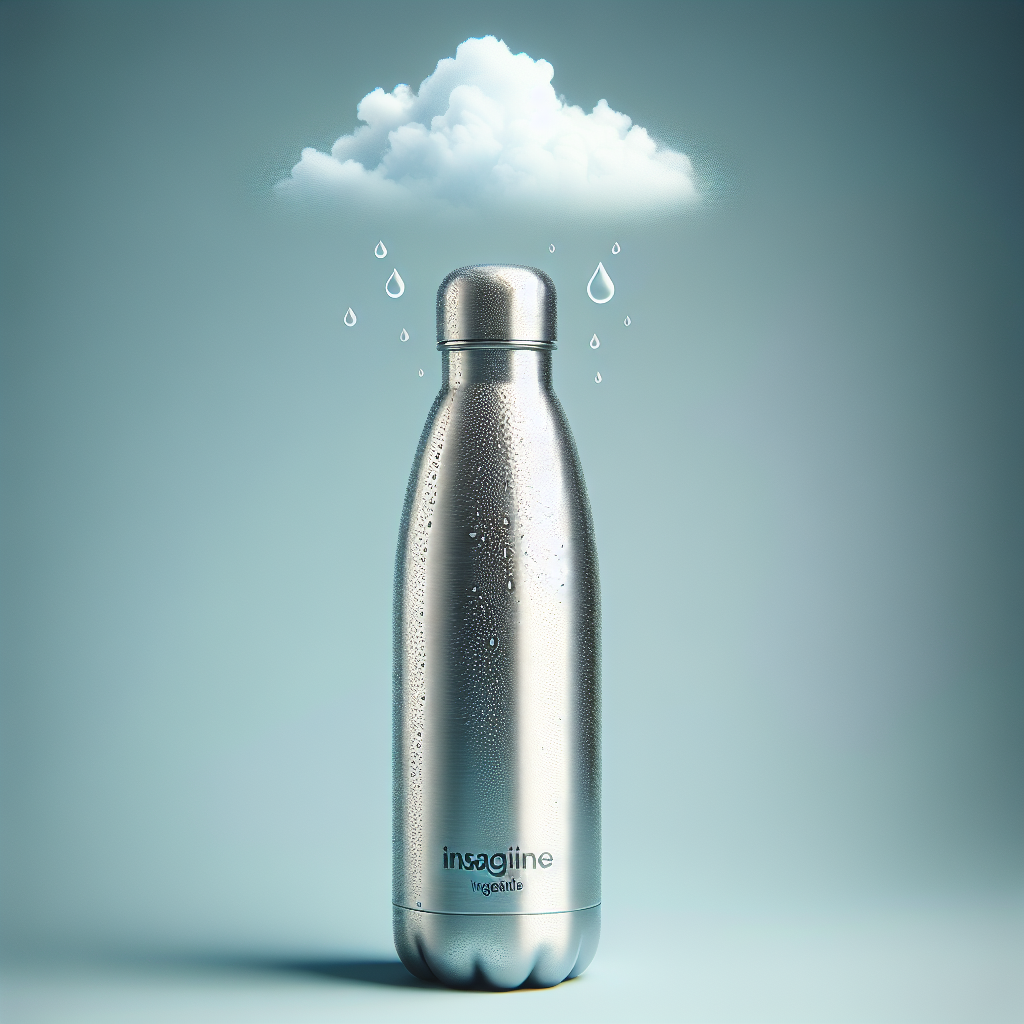Are you ready to beat the heat and stay healthy in hot climates? In this article, you will discover some essential tips and tricks to keep hydrated and maintain your well-being even when temperatures rise. With practical advice and easy-to-follow suggestions, you’ll learn how to stay cool, quench your thirst, and protect your body from the potential risks of hot weather. So, grab a refreshing beverage and get ready to make the most out of the scorching summer days!

Understanding Dehydration
Definition of Dehydration
Dehydration occurs when your body loses more fluids than it takes in. It happens when your body doesn’t have enough water to carry out its normal functions. Water plays a vital role in maintaining proper bodily functions such as digestion, circulation, temperature regulation, and waste removal. When you don’t replenish the lost fluids, you become dehydrated.
Symptoms and Signs of Dehydration
Recognizing the symptoms and signs of dehydration is essential for maintaining good health, especially in hot climates. Some common symptoms include increased thirst, dry mouth and throat, fatigue, dizziness, decreased urine output, dark-colored urine, dry skin, headache, and muscle cramps. Severe dehydration can lead to more serious complications such as rapid heartbeat, low blood pressure, fainting, and even organ failure. Therefore, it is crucial to identify these symptoms early on and take prompt action to rehydrate your body.
Effects of Dehydration on the Body
Dehydration can have detrimental effects on your body, both in the short term and the long term. In the short term, it can impair your physical and cognitive performance, making you feel weak, lethargic, and unable to concentrate. It can also increase the risk of heat exhaustion and heatstroke, two serious heat-related illnesses. In the long term, chronic dehydration can lead to kidney stones, urinary tract infections, constipation, and other health problems. It is essential to understand the effects of dehydration to appreciate the importance of staying hydrated in hot climates.
Why Hydration is Crucial in Hot Climates
General Impacts of High Temperatures on the Body
Hot climates can significantly affect your body’s ability to maintain its internal temperature. When you’re exposed to high temperatures, your body starts sweating as a natural cooling mechanism. Sweating helps regulate your body’s temperature by evaporating off your skin. However, excessive sweating due to hot climates can lead to an increased risk of dehydration and heat-related illnesses.
Role of Hydration in Regulating Body Temperature
Proper hydration plays a crucial role in regulating body temperature, especially in hot climates. When you drink enough water, it helps replenish the fluids lost through sweating and keeps your body temperature within a safe range. Adequate hydration can also help prevent heat-related illnesses by supporting your body’s cooling mechanisms and maintaining optimal physiological function.
Consequences of Neglecting Hydration in Hot Weather
Neglecting hydration in hot weather can have serious consequences on your health and well-being. It can lead to heat exhaustion, heatstroke, and other heat-related illnesses, which can be life-threatening if not treated promptly. Additionally, dehydration can impair your physical and mental performance, making it harder to function effectively in high temperatures. It is vital to prioritize hydration in hot weather to avoid these potential consequences.

Recommended Hydration Levels
Daily Hydration Needs
Meeting your daily hydration needs is crucial regardless of the climate, but it becomes even more important in hot climates. The National Academy of Medicine recommends an average daily water intake of around 3.7 liters (about 15 cups) for men and 2.7 liters (about 11 cups) for women. However, individual hydration needs may vary depending on factors such as age, weight, activity level, and overall health. It is always best to listen to your body and drink enough water to quench your thirst throughout the day.
Additional Water Requirements in Hot Climates
In hot climates, your body’s water requirements increase due to increased sweating and higher fluid losses. It is crucial to drink additional water to compensate for these losses and maintain proper hydration. As a general guideline, experts recommend adding 1-2 cups of water for every hour spent in hot weather. This extra water will help replace the fluids lost through sweating and prevent dehydration.
Factors Influencing Individual Hydration Needs
Various factors can influence an individual’s hydration needs in hot climates. These factors include:
- Activity level: Engaging in physical activities such as exercise or outdoor sports increases your fluid needs.
- Climate: Hotter climates lead to more extensive sweating, necessitating higher fluid intake.
- Body weight: Heavier individuals generally require more fluids to stay adequately hydrated.
- Age: Older adults may have a reduced sensation of thirst, making it important to drink water regularly.
- Health conditions: Certain medical conditions, such as kidney disease or diabetes, may require careful monitoring of water intake.
Understanding these factors can help you determine and meet your individual hydration needs in hot climates effectively.
Effective Hydration Strategies
Drinking Sufficient Water Throughout the Day
To maintain optimal hydration in hot climates, it is essential to drink sufficient water throughout the day. It is recommended to keep a water bottle with you at all times and sip on it regularly. Aim to drink small amounts of water frequently rather than chugging large quantities at once. This helps your body absorb and utilize the water more efficiently.
Rehydrating After Profuse Sweating
If you engage in activities that cause profuse sweating, it is crucial to replenish the lost fluids by rehydrating appropriately. After sweating excessively, drinking water or electrolyte-enhanced beverages can help restore your body’s fluid balance. Electrolytes, such as sodium and potassium, are minerals that aid in maintaining proper hydration levels. Including foods rich in electrolytes, such as bananas or coconut water, can also be beneficial in replenishing what is lost through sweating.
Hydration Tips for Prolonged Outdoor Activities in High Temperatures
When participating in prolonged outdoor activities in high temperatures, it is essential to take extra precautions to stay hydrated. Some key tips include:
- Start hydrating well before the activity: Drink water or hydrating beverages in the hours leading up to your outdoor activity to preemptively hydrate your body.
- Take water breaks: Schedule regular breaks during your activity to drink water and avoid waiting until you feel thirsty.
- Seek shade and cool areas: When possible, take breaks in shaded or air-conditioned areas to prevent excessive heat exposure.
- Wear lightweight and breathable clothing: Choose clothing made of fabrics that allow air circulation and aid in sweat evaporation.
- Use a water-resistant sunscreen: Protecting your skin from the sun’s rays helps prevent excessive fluid loss due to heat.
- Avoid caffeine and alcohol: These substances can contribute to dehydration and should be limited in hot climates.
By following these hydration tips, you can ensure adequate fluid intake during prolonged outdoor activities in high temperatures.

Role of Diet in Maintaining Hydration
Hydrating Foods to Include in the Diet
While drinking water is the most effective way to stay hydrated, certain foods can also contribute to your overall fluid intake. Including hydrating foods in your diet can provide an additional source of fluids. Some examples of hydrating foods include watermelon, cucumbers, oranges, strawberries, tomatoes, and leafy greens. These foods contain high water content and are rich in vitamins and minerals, making them beneficial for both hydration and overall health.
Effect of Salt Intake on Hydration Status
Salt, or sodium, plays a crucial role in maintaining the body’s fluid balance. Consuming excessive amounts of salt can lead to fluid retention and swelling, but adequate salt intake is necessary for optimal hydration, especially in hot climates. While it is important to moderate salt intake, avoiding it completely can interfere with your body’s ability to retain water. Balancing your salt intake and drinking enough water is key to maintaining proper hydration.
Importance of Balancing Electrolytes
Electrolytes are minerals found in your body fluids that help maintain the balance of fluids and aid in various bodily functions. In addition to sodium, other electrolytes include potassium, calcium, and magnesium. Ensuring a proper balance of electrolytes is essential for optimal hydration, especially in hot climates. Consuming a balanced diet that includes sources of these electrolytes, such as fruits, vegetables, dairy products, and nuts, can help maintain electrolyte balance and support overall hydration.
Non-Water Hydration Options
Hydrating Benefits of Herbal Teas
While water should be your primary source of hydration, herbal teas can also contribute to your overall fluid intake. Many herbal teas, such as peppermint, chamomile, and hibiscus, can be enjoyed hot or cold and provide hydrating benefits. However, it is important to note that certain herbal teas, such as diuretic teas or those containing caffeine, may have a slight dehydrating effect. It is best to choose herbal teas without diuretic properties to maximize their hydrating benefits.
Pros and Cons of Sports and Energy Drinks
Sports and energy drinks are marketed as optimal sources of hydration for athletes or those engaging in strenuous activities. While these beverages can provide a quick source of electrolytes and carbohydrates for energy, they may not be suitable for everyone. Sports drinks often contain added sugars and calories, which can be counterproductive for those trying to maintain a balanced diet or manage their weight. Additionally, energy drinks can contain high levels of caffeine, which can increase the risk of dehydration. It is important to assess your individual needs and consult a healthcare professional before consuming these drinks regularly.
Natural Juices and Their Hydrating Qualities
Natural juices, such as watermelon juice or cucumber juice, can provide a refreshing and hydrating option in hot climates. These juices are rich in water content and can help replenish fluids and electrolytes. However, it is important to consume natural juices without added sugars or artificial ingredients. Pure, freshly squeezed juices are the best option for optimal hydration benefits.

Monitoring Your Hydration Levels
Signs of Adequately Hydrated Body
Knowing the signs of an adequately hydrated body can help you assess your hydration status. Some signs of optimal hydration include clear or pale yellow urine, normal thirst levels, regular urination, balanced energy levels, and overall well-being. Monitoring these signs can help you maintain a hydrated body in hot climates.
Useful Tools and Techniques for Assessing Hydration Status
Various tools and techniques can help you assess your hydration status accurately. One simple method is to monitor the color of your urine. Dark-colored urine indicates dehydration, while clear or pale yellow urine suggests adequate hydration. Another tool is to weigh yourself before and after exercise or high-heat activities. The difference in weight reflects fluid losses and can guide you in determining how much water you need to replenish. Additionally, smart water bottles and mobile applications are available that can track your water intake and provide reminders to drink throughout the day. These tools can be helpful in establishing and maintaining healthy hydration habits.
Dehydration Warning Signs to Watch Out For
Being aware of dehydration warning signs can help you take action before it becomes a more serious issue. Look out for symptoms such as extreme thirst, dry mouth, rapid heartbeat, dizziness, confusion, and inability to sweat. If you experience any of these symptoms, it is crucial to seek shade, cool down, and drink water immediately. Severe dehydration requires medical attention, so be mindful of these warning signs and respond promptly.
Importance of Acclimatization
Understanding the Process of Acclimatization
Acclimatization refers to the process by which your body gradually adjusts to new or changing environmental conditions, specifically with regard to temperature and humidity. When exposed to hot climates, your body needs time to adapt to the increased temperatures and adjust its physiological responses, such as sweating and blood circulation. Acclimatization is an essential process to help your body cope with the demands of hot climates more efficiently.
How Acclimatization Impacts Hydration Needs
During the acclimatization process, your body undergoes multiple changes to improve its heat tolerance. One significant change is an increase in sweat production and efficiency. Sweating earlier and in larger amounts helps your body cool down more effectively, reducing the risk of dehydration. However, increased sweating also means higher fluid losses, making it crucial to adjust your hydration strategy accordingly during the acclimatization phase.
Strategies for Successful Acclimatization
To ensure successful acclimatization in hot climates, it is important to follow these strategies:
- Gradual exposure: Start by spending short periods of time in hot climates and gradually increase your exposure over time. This allows your body to adapt and minimize the risk of dehydration.
- Stay hydrated: Prioritize hydration during the acclimatization process by drinking plenty of water and replenishing electrolytes as needed.
- Rest and cool down: Take breaks in cool areas or shade to allow your body to recover from exposure to high temperatures.
- Listen to your body: Pay attention to any signs of discomfort or excessive fatigue and adjust your activities accordingly. Pushing yourself too hard during the acclimatization process can hinder adaptation and increase the risk of heat-related illnesses.
By following these strategies, you can help your body acclimatize to hot climates more effectively and stay hydrated.

Understanding Heat-Related Illnesses
Types of Heat-Related Illnesses
Several heat-related illnesses can occur in hot climates, ranging from mild to severe. Some common heat-related illnesses include:
- Heat cramps: Painful muscle cramps caused by electrolyte imbalances due to excessive sweating.
- Heat exhaustion: Characterized by heavy sweating, weakness, dizziness, and nausea. It can progress to heatstroke if not treated promptly.
- Heatstroke: A life-threatening condition where the body’s temperature rises rapidly, leading to organ failure. It requires immediate medical attention.
Understanding and identifying these heat-related illnesses is crucial for taking appropriate preventive measures.
Risk Factors for Developing Heat-Related Illnesses
Certain factors can increase your susceptibility to heat-related illnesses. These risk factors include:
- Age: The elderly and young children are at a higher risk due to their limited ability to regulate body temperature.
- Chronic medical conditions: Individuals with pre-existing health conditions such as heart disease, diabetes, or obesity are more vulnerable to heat-related illnesses.
- Medications: Certain medications can impair the body’s ability to regulate temperature or increase fluid loss through sweating.
- Lack of acclimatization: Insufficient time for acclimatization to hot climates can heighten the risk of heat-related illnesses.
Taking into account these risk factors can help you prioritize preventive measures and ensure your well-being in hot climates.
Prevention and Treatment of Heat-Related Illnesses
Preventing heat-related illnesses requires a proactive approach. Some preventive measures include:
- Stay hydrated: Drink plenty of water and fluids that contain electrolytes to replenish what is lost through sweating.
- Wear appropriate clothing: Opt for lightweight, loose-fitting, and breathable clothing that allows for adequate air circulation and sweat evaporation.
- Seek shade and cool areas: Take regular breaks in shaded or air-conditioned areas to prevent excessive heat exposure.
- Limit outdoor activities during peak heat: Avoid outdoor activities during the hottest parts of the day when temperatures are most extreme.
- Use sunscreen: Apply a water-resistant sunscreen with at least SPF 30 to protect your skin from excessive sun exposure.
If you or someone you know experiences symptoms of a heat-related illness such as dizziness, nausea, or confusion, it is important to take immediate action. Move to a shaded or cool area, remove excess clothing, and drink water. If symptoms worsen or don’t improve, seek medical attention promptly.
Practical Tips for Staying Hydrated and Healthy in Hot Climates
Creating a Personalized Hydration Plan
Developing a personalized hydration plan is crucial for staying hydrated and healthy in hot climates. Consider the following factors when creating your plan:
- Individual needs: Take into account your age, weight, activity level, and overall health to determine your specific hydration needs.
- Climate: Adjust your fluid intake based on the temperature, humidity, and duration of exposure to hot climates.
- Lifestyle: Consider your daily routine and build in regular reminders to drink water. Set specific goals for water consumption throughout the day.
- Monitoring: Use tools and techniques such as urine color, weight measurements, or smart water bottles to monitor your hydration levels.
By creating a personalized hydration plan, you can ensure that you are staying adequately hydrated while adapting to the demands of hot climates.
Building Healthy Hydration Habits
Building healthy hydration habits is key to maintaining optimal hydration in hot climates. Incorporate the following habits into your daily routine:
- Carry a water bottle: Keep a reusable water bottle with you at all times to encourage regular water consumption.
- Set reminders: Use alarms or smartphone apps to remind yourself to drink water at regular intervals throughout the day.
- Make it enjoyable: Enhance the taste of water by infusing it with fruits, herbs, or adding a slice of lemon or lime. This can make hydrating more enjoyable, especially for those who struggle to drink plain water.
- Track your progress: Keep a journal or use a hydration tracking app to monitor your daily water intake. This can help you stay accountable and motivated to meet your hydration goals.
By implementing these habits into your daily life, staying hydrated in hot climates will become second nature.
Overcoming Common Challenges in Staying Hydrated
Staying hydrated in hot climates can sometimes be challenging due to various factors. Addressing these challenges head-on can help you overcome them more effectively. Some common challenges include:
- Lack of convenience: Ensure easy access to water by carrying a refillable water bottle or knowing the locations of water sources in your surroundings.
- Distractions and forgetfulness: Set reminders or use smartphone apps to stay on track with your hydration goals.
- Taste preferences: Experiment with different flavorings or try hydrating foods to add variety to your hydration routine.
- Time constraints: Make hydration a priority by planning breaks in your schedule specifically for drinking water.
- Lack of thirst sensation: Even if you don’t feel thirsty, it is still important to drink water regularly to prevent dehydration. Set reminders or use thirst as a cue to drink.
By acknowledging and addressing these challenges, you can ensure that staying hydrated becomes an integral part of your daily routine, regardless of the climate.
In conclusion, staying hydrated and healthy in hot climates is of utmost importance for your overall well-being. Understanding dehydration, recognizing the signs and symptoms, and implementing effective hydration strategies are essential for preventing heat-related illnesses and maintaining optimal bodily functions. By creating personalized hydration plans, incorporating healthy habits, and addressing common challenges, you can navigate hot climates with ease, ensuring you stay adequately hydrated and enjoy the experience to the fullest. Remember, taking care of your hydration needs is a key component of a healthy lifestyle, no matter where you find yourself. Stay hydrated, stay healthy!

